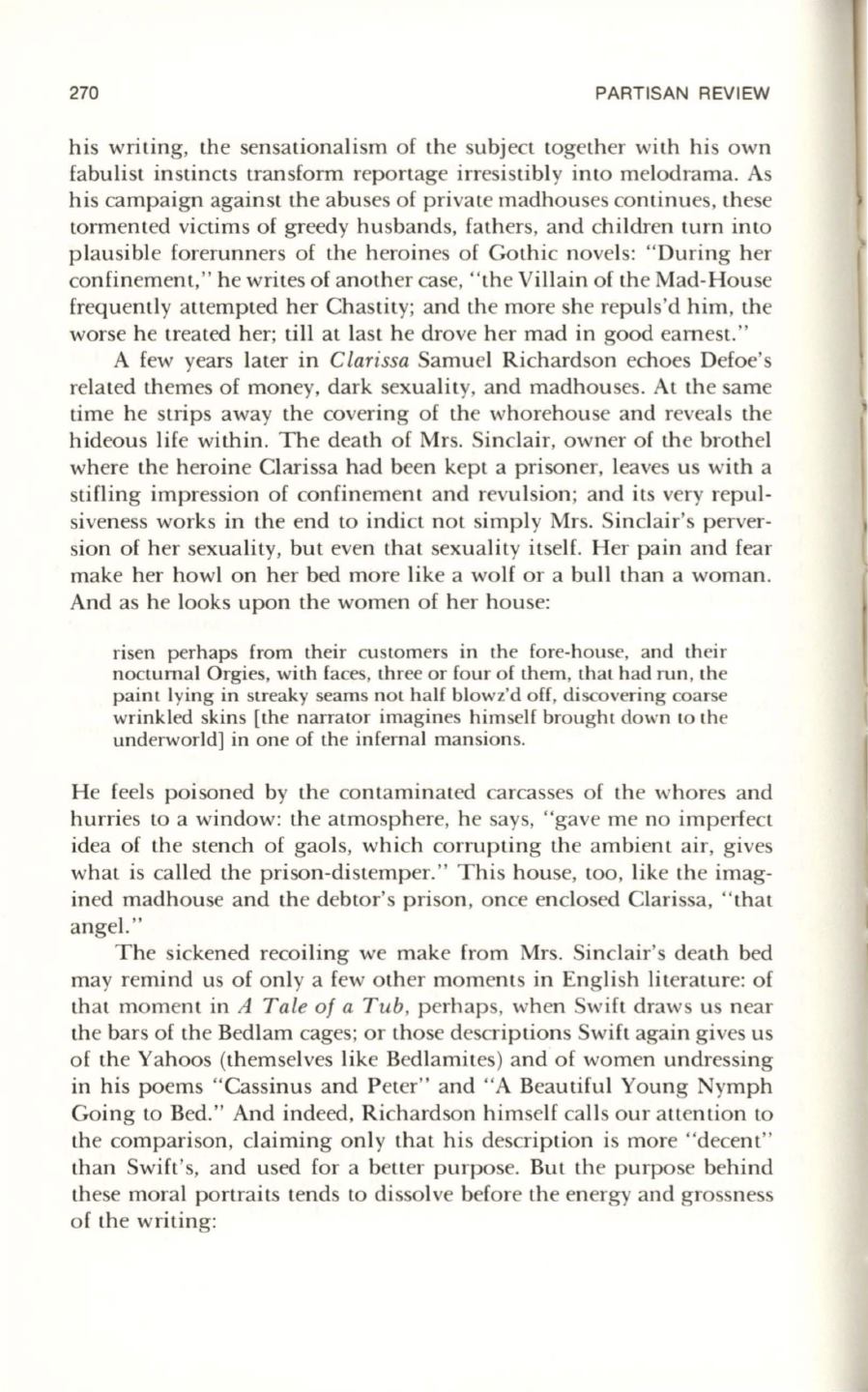
270
PARTISAN REVIEW
his writing, the sensationalism of the subject together with his own
fabulist instincts transform reportage irresistibly into melodrama. As
his campaign against the abuses of private madhouses continues, these
tormented victims of greedy husbands, fathers, and chi ldren turn into
plausible forerunners of the heroines of Gothic novels: "During her
confinement," he writes of another case, "the Villain of the Mad-House
frequently attempted her Chastity; and the more she repuls'd him, the
worse he treated her; till at last he drove her mad in good earnest."
A few years later in
CLarissa
Samuel Richardson echoes Defoe's
related themes of money, dark sexuality, and madhouses. At the same
time he strips away the covering of the whorehouse and reveals the
hideous life within. The death of Mrs. Sinclair, owner of the brothel
where the heroine Clarissa had been kept a prisoner, leaves us with a
stifling impression of confinement and revulsion; and its very repul–
siveness works in the end to indict not simply Mrs. Sinclair's perver–
sion of her sexuality, but even that sexuality itself. Her pain and fear
make her howl on her bed more like a wolf or a bull than a woman .
And as he looks upon the women of her house:
risen perhaps from their customers in the fore-house, and their
nocturnal Orgies, with faces, three or four of them, that had run, the
paint lying in streaky seams not half blowz'd off, discovering coarse
wrinkled skins [the narrator imagines himself brought down to the
underworld] in one of the infernal mansions.
He feels poisoned by the contaminated carcasses of the whores and
hurries to a window: the atmosphere, he says, "gave me no imperfect
idea of the stench of gaols, which corrupting the ambient air, gives
what is called the prison-distemper." This house, too, like the imag–
ined madhouse and the debtor's prison, once enclosed Clarissa, "that
angel."
The sickened recoiling we make from Mrs. Sinclair's death bed
may remind us of only a few other moments in English literature: of
that moment in
A TaLe of a Tub,
perhaps, when Swift draws us near
the bars of the Bedlam cages; or those descriptions Swift again gives us
of the Yahoos (th emselves like Bedlamites) and of women undressing
in his poems "Cassinus and Peter" and "A Beautiful Young Nymph
Going to Bed." And indeed, Richardson himself ca lls our attention to
the comparison, claiming only that his description is more "decent"
than Swift's, and used for a better purpose. But the purpose behind
these moral portraits tends to dissolve before the energy and grossness
of the writing:


